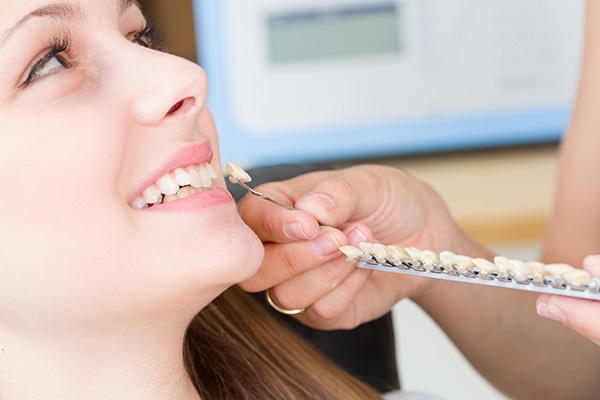 General dentistry helps to keep your mouth healthy with preventative treatments like teeth cleanings. It addresses issues that develop in your mouth. Regardless of how well a person takes care of their teeth, they might become damaged or discolored due to factors like trauma to the face or taking medication like tetracycline antibiotics.
General dentistry helps to keep your mouth healthy with preventative treatments like teeth cleanings. It addresses issues that develop in your mouth. Regardless of how well a person takes care of their teeth, they might become damaged or discolored due to factors like trauma to the face or taking medication like tetracycline antibiotics.
Veneers are one of the restorations used in general dentistry. These tooth-shaped shells are used to cover the front part of teeth, hiding any flaws on them. Veneers were invented to make the smiles of actors look better on screen, and it is one of the most effective ways to improve the way a person’s smile looks drastically. They only cover the front part of teeth, so they are typically recommended when the patient’s issues are isolated there.
How veneers are used in general dentistry
Veneers have multiple uses in general dentistry. Some of the issues a dentist might recommend veneers for include:
- Crooked teeth.
- Stained and discolored teeth.
- Deformed teeth.
- Spaces between teeth.
- Short teeth.
- Poorly shaped teeth.
- Chipped and broken teeth.
The process
Getting veneers placed on teeth usually requires multiple dental visits. The procedure requires making permanent alterations to the patient’s teeth by removing portions of enamel, so dentists typically give patients time to think about their decision.
The first part of the procedure involves injecting the patient with a local anesthetic and removing enamel from the front part of their teeth being treated. The removal of enamel makes space for restorations and prevents the treated tooth from looking abnormally bulky.
An impression of the teeth being treated is made by having the patient bite down on a mold or using digital images to create a 3D model. The impression or model is sent to technicians in a lab where dental restorations like veneers are made. The process takes about two weeks for the customized restoration to get back to the dentist. The patient gets temporary veneers to protect their teeth while they wait.
The patient comes back for a second appointment about two weeks after their first appointment. The temporary veneers are taken off, and the customized veneers are installed. Alterations are made as needed to ensure the veneers fit as they should. The patient’s smile should be wholly transformed at that point.
Patients who would rather not have their enamel altered should consider no-prep veneers. This is a particular type of veneer that does not require removing enamel from the patient’s teeth. These restorations are a lot thinner than conventional veneers, so they do not cover up stains and discoloration as well.
Benefits
The benefits of restoring teeth with veneers include:
- Dentists often tackle multiple issues with their installation, like stained and crooked teeth.
- Veneers can transform any smile into an amazing one.
- Porcelain veneers are less prone to staining than natural teeth.
- Veneers do not require special care.
Transform your smile
Dealing with a dental problem that affects the appearance of your teeth? Call or stop by our Downey clinic to explore options like veneers.
Request an appointment or call Valley Family Dental Group at 562-450-1257 for an appointment in our Downey office.
Related Posts
Curious about what general dentistry professionals recommend for healthier gums? Read on to find out. Your gums support your teeth. If the gums and underlying jawbone are weakened, then teeth are vulnerable to becoming lost if left untreated for an extended amount of time. The good news is that you can have healthier gums through…
General dentistry focuses on preventative treatments, but it includes using dental cosmetics like veneers to restore or enhance the appearance of teeth. A veneer is a tooth-shaped restoration that is cemented to the front part of a tooth. It covers up any imperfections, damages, or deformities on that part of the tooth. Veneers started out…
General dentistry offers multiple ways to cure bleeding gums, with many of them being simple solutions. Bleeding gums should not be ignored; they could be caused by something as minor as brushing too aggressively or something as serious as chronic gum disease. A visit to a dentist is in order if your gums often bleed…
